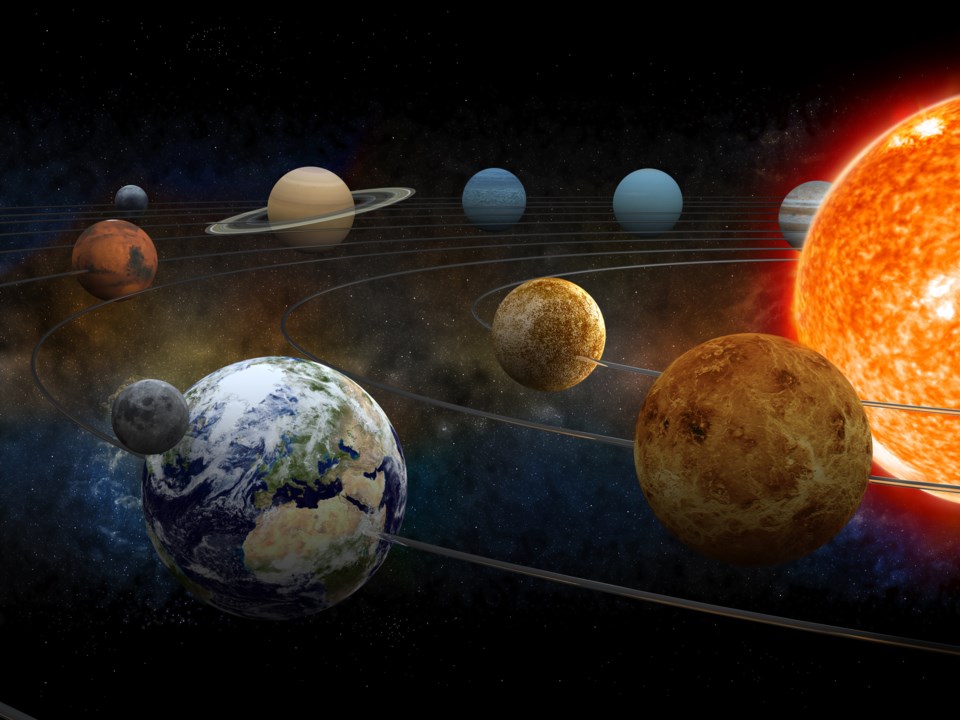The moon is one day past new as the month begins. A real challenge will be to see Mercury 1.8 degrees north early on the morning of May 2nd. May 4, Ceres is 0.01 degrees away, and if you live in the Southern or Eastern Hemisphere, Ceres will be occulted. The moon is full May 16, which is a total lunar eclipse for eastern North America. The moon rises in mid-eclipse for the west.
By May 21, Saturn is four degrees north of the moon; in the early morning of May 23, Venus, Jupiter, Mars, Neptune, the moon and Saturn line up along the horizon before dawn. Venus is occulted May 26 for viewers in the Far East, while Uranus is occulted May 28 for those in the Southern Hemisphere. The moon is new on May 30.
Mercury, as noted above joins up with the moon May 2; a tough challenge, though, as the very new moon is barely visible, just a couple days old. And, that’s the last we’ll see of Mercury this month.
Venus is the first in a stretch of planets at dawn early in the month: from the east, Venus, Jupiter, Mars, and Saturn. But they won’t be visible for long as the sun begins its inexorable rise to bring on the day. Counterintuitively, as Venus gradually orbits away from Earth, it rises higher and higher in the morning sky, following the changing angle of the ecliptic.
Mars is in much the same circumstance as Venus, except that it rises much earlier, so it visible for that much longer. Through the month, Mars starts out west of Jupiter, catches up by May 25, then is past by May 29. On May 31, we see one inner planet and five outer planets lined up in the morning twilight: Uranus, Venus, Mars, Jupiter, Neptune and Saturn.
Jupiter, as already noted, is one of those outer planets visible in the early morning, being outshone by its close companion Mars by a few magnitudes. Watch for the crescent moon to show up on the mornings of May 24 and 25.
Saturn rises around 3 a.m. at the beginning of the month, leading the parade of planets mentioned above. It shows up a little after 1:30 by month-end. The moon glides by May morning of May 22.
Uranus spends much of the month behind the sun, only becoming visible by about May 28, when it is occulted for observers in the Southern Hemisphere.
Neptune and Jupiter are seemingly joined at the hip, spending the whole month together, then joined by Mars on May 30.
On May 6, the Eta Aquariid meteors peak in the early morning.
James Edgar has had an interest in the night sky all his life. He joined the Royal Astronomical Society of Canada in 2000, was national president for two terms, is now the editor of the Observer’s Handbook, and production manager of the bi-monthly RASC Journal. The IAU named asteroid 1995 XC5 “(22421) Jamesedgar” in his honour and in 2021 he was awarded a Fellowship of the RASC.


